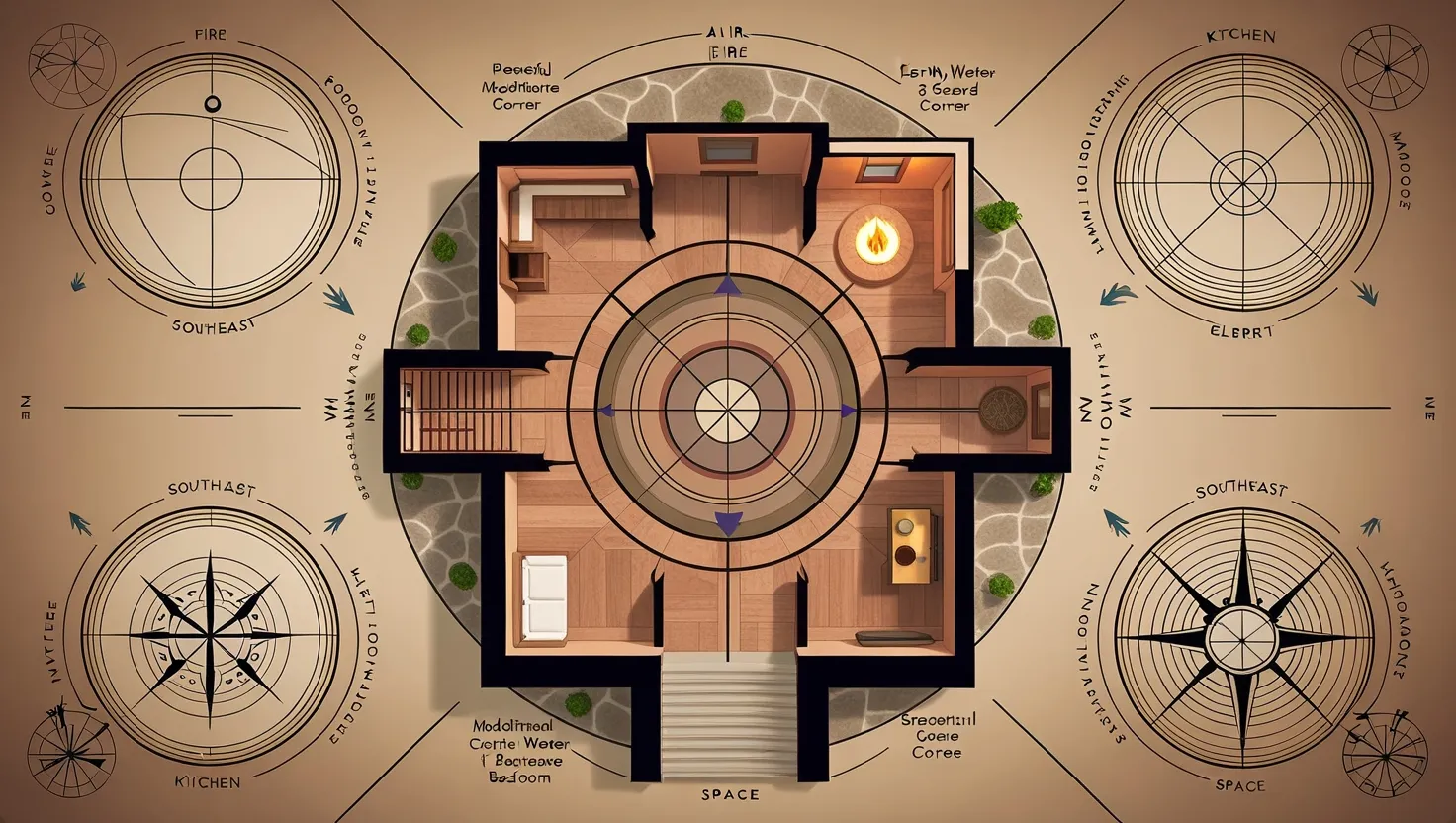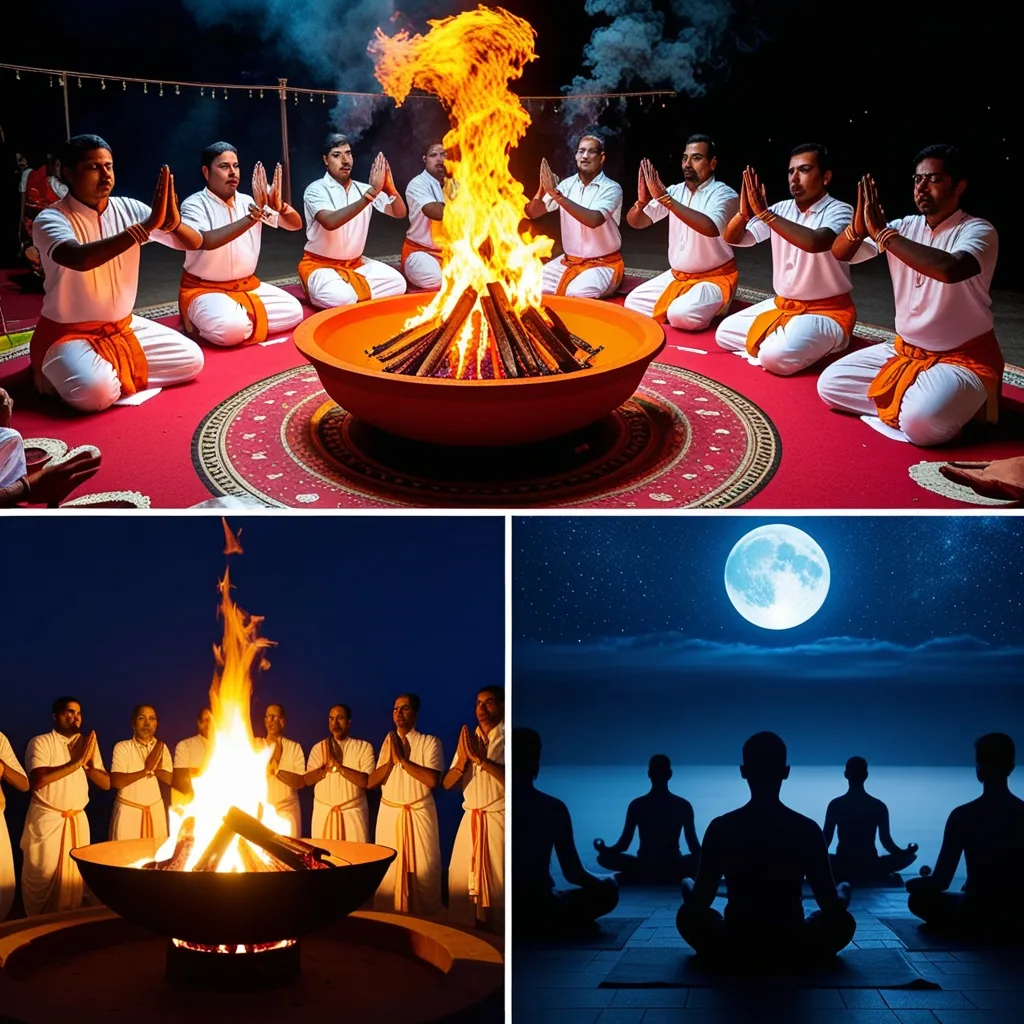When I first began to explore the Vedic science of sacred space, I was struck by its quiet power. Vastu Shastra, some say, is the oldest architectural treatise in the world, yet its principles feel as relevant to our modern environments as they did thousands of years ago. The Vedas teach that our living spaces are not simply material containers. They are vessels of consciousness, mirrors of the cosmic order, and subtle influences on every joy, thought, or sorrow we encounter. Are our homes just four walls and a roof, or do they hold the potential to shape our inner world in ways we barely recognize?
“Architecture should speak of its time and place, but yearn for timelessness.” – Frank Gehry
In Vastu, the very act of building becomes a sacred ritual. Every wall, corner, and opening is placed according to cosmic principles that link the macrocosm—the universe—to the microcosm—ourselves. The concept of Purusha, described in the Rig Veda, gives form to this idea. The cosmic being lies across every plot, with each part of his body corresponding to a direction. The northeast, associated with the head, becomes a zone for clarity—perfect for meditation or prayer. The southeast, mapped to fire and the stomach, suits kitchens and spaces of activity. The southwest, holding the legs, feels grounding and protective, making it ideal for bedrooms. In every arrangement, Vastu offers a subtle choreography of life’s energies.
Can the placement of furniture, the direction of a door, or the color of a wall truly affect our mood and fortune? What happens when we align our homes with ancient wisdom, as opposed to mere convenience?
This science goes even deeper. Vastu teaches that the five elements—earth, water, fire, air, and space—each reign over a direction. Northeast vibrates with water, bringing peace and introspection. Southeast crackles with fire, nurturing creativity and drive. Northwest flows with air, promoting movement and change. Southwest anchors earth’s solidity, bestowing stability. The center, unmarked by corners, is pure space, a zone for openness and possibility. When we assign activities to their proper element, the house itself seems to support us, not just physically, but emotionally and even spiritually.
“The details are not the details. They make the design.” – Charles Eames
Each direction also embodies a particular energy. East is tied to the sunrise and new beginnings. Picture a study or a child’s room facing east, filled with morning light—learning and growth seem to flow naturally. North governs prosperity, the realm of financial activities, drawing abundance. South represents strength and protection; is it any wonder master bedrooms, the heart of safety, so often settle here? West is the keeper of completion and endings, suited to storage and closure. The art is in awareness—in tuning our surroundings to these subtle signatures.
We so rarely think about the materials our homes are made of in these energetic terms. Vedic texts urge us to choose earth-based materials: brick, wood, stone. These elements are said to maintain prana, the life force, supporting clarity and well-being. When I walk into a room paneled in warm wood, there is a palpable difference from a plastic-coated space. Synthetic materials, in contrast, are believed to disrupt subtle flows, sowing restlessness and fatigue. Even physical health, it turns out, may be shaped by the bricks and mortar that encase us.
“Space has always been the spiritual dimension of architecture. It is not the physical statement of the structure so much as what it contains that moves us.” – Arthur Erickson
Vastu is perhaps most astonishing in its use of sacred geometry and proportion. The dimensions and layout of a room—rooted in mathematical ratios derived from astronomy—are said to shape our moods, cognitive function, and receptivity. When proportions align, harmony settles over the home like a gentle dawn. When they jar, imbalance festers. In my own experience, walking into symmetrical, well-proportioned spaces feels almost like stepping into a sanctuary; agitation softens, and thought becomes clear.
Modern research has begun to validate what the ancients intuited. We know now that room orientation influences our body clocks, with morning sunlight regulating hormones and mental clarity. Built environments affect social dynamics, determining how easily we interact or withdraw. Even the choice of building materials can affect health, linked to air quality, mood, and energy levels. Isn’t it remarkable that ideas written millennia ago anticipated discoveries emerging from today’s laboratories?
“How can a space foster spiritual growth?” I often ask myself. Vastu answers with practical guidance. Sometimes, the smallest adjustments yield the greatest impact. Orienting a bed toward the east or north, placing a desk where it draws daylight, keeping clutter away from the entrance—these simple changes can transform the quality of energy in a home. I have seen rooms feel instantly lighter, more vibrant, just by honoring these principles.
“Design is not just what it looks like and feels like. Design is how it works.” – Steve Jobs
The deeper goal, though, reaches past comfort and efficiency. Vastu sets the stage for self-realization. Homes are not mere shelters; they are temples for daily practice. Cooking becomes an act of reverence in the southeast kitchen, meditation a gateway to tranquility in the northeast alcove. Even work and rest, placed in their cosmic zones, evolve into paths of self-discovery. Can you recall a moment when the atmosphere of a space brought out your best, made anxiety fade, or stirred a burst of insight? This is the promise of living in cosmic alignment: ordinary moments become sacred.
The design philosophy woven through Vastu is refreshingly timeless. It asks us to move beyond trends and grids, to sense the pulse of the universe mirrored in our living spaces. It is practical—choose materials and orientations that nurture health and joy. It is philosophical—recognize your home as a miniature cosmos, alive with pattern and purpose.
“Form follows function—that has been misunderstood. Form and function should be one, joined in a spiritual union.” – Frank Lloyd Wright
Where do we begin, if we want to harness these ancient teachings? I suggest a walk through your current space. Notice which rooms invite calm, which draw agitation. Is light entering from the east, or blocked by walls? Is the main entrance tidy, open to the north or east, or closed off? Are activities clustered with their natural elements—fire in the kitchen, water in the meditation room, earth in the master bedroom? Even in the busiest city apartment, small shifts can bring surprising results.
Ask yourself: what would it feel like to live in harmony with the forces described in the Vedas? Would sleep deepen, stress dissolve, creativity blossom? The practice is not about superstition or rigid rules, but about restoring lost intuition—listening to the energies that surround us and shaping them gently in our favor.
The wisdom of Vastu Shastra is both ancient and strikingly modern. It bridges spiritual aspiration with daily life, guiding us to build not just houses, but environments that nurture every aspect of our being. These lessons teach us that our surroundings matter, not just in practical terms, but as mirrors of the greater universe. When we design with intention—with cosmic alignment—our homes become laboratories for self-growth, sanctuaries for peace, and spaces where the extraordinary potential of the human spirit can truly flourish.
“Your sacred space is where you can find yourself again and again.” – Joseph Campbell
Isn’t it worth asking: could our everyday spaces be the most powerful spiritual tools we possess? In the silent geometry of rooms, perhaps ancient secrets are still waiting to be quietly rediscovered, every time we step through the door.






